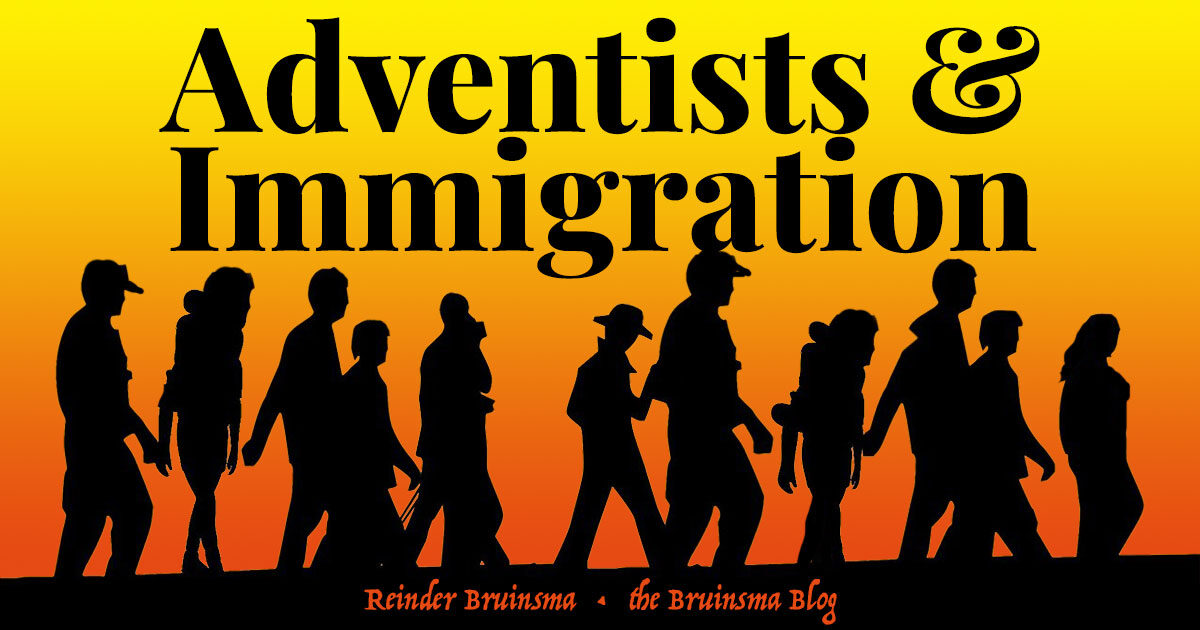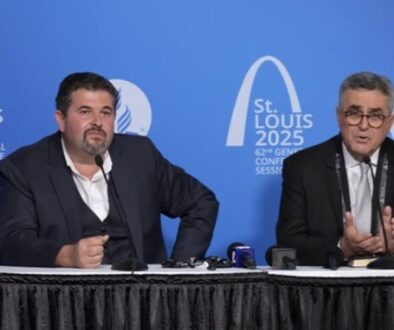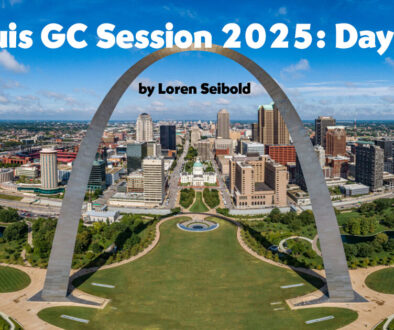Is Immigration a Problem—or an Opportunity?
by Reinder Bruinsma | 5 February 2025 |
In many western countries the most heated political issue right now is, “How can we stop the constant flow of immigrants?”
Of course, politicians have other concerns, too: the war in Ukraine, the chaos in the Middle East, the nuclear ambitions of North Korea, the uncertainties in Syria, and the undeniable reality of climate change. Most of these are interconnected. Likewise, the global refugee problem and the never-ending challenges of migration do not stand on their own: they are a result of our interconnected world.
It seems to me that immigration can be approached from two perspectives.
Immigration brings trouble
The consistent message from right-leaning politicians and their followers is that immigration is nothing but a problem. Decreasing the number of people who seek entrance to our countries, either illegally or legally, is their priority. Though President Biden took measures to curb illegal immigration across the southern border of the United States, the new administration is adamant that they can do more to exclude not just criminals, but all of those who want to hitch a ride on the American dream.
A similar scenario plays out in European countries. In the upcoming national German elections the right-wing Alternative for Germany party is making immigration their topic.
In my country, the Netherlands, one of the leading parties in the current government coalition has promised to introduce the most restrictive immigration policies the country has ever seen. Listening to the rhetoric of the government officials one would think that limiting the number of immigrants would almost instantaneously solve all other problems Dutch society is struggling with.
Immigration does bring big challenges. In the Netherlands it aggravates the housing shortage. And there is, regrettably, a small number of asylum-seekers who are guilty of criminal behavior, and successfully dodge deportation after their requests for asylum have been turned down. Yes, it’s true that people from other European Union countries work in the Netherlands in substantial numbers. But it’s also true that many Dutch people work elsewhere in the EU. Many have come to work in our country legally, and are essential for jobs for which no Dutch workers can be found—seasonal workers, laborers, but also skilled technicians and scientists. There are also tens of thousands of foreign students, most of whom will leave after they graduate.
It turns out that asylum-seekers—who dominate the discussion among the anti-immigration people—are only fifteen percent of immigrants in the Netherlands! And frankly, probably the biggest problem with this group has to do with the authorities’ poor handling of their asylum requests.
Immigration is a phenomenon of all times
Since ancient times, large groups of people have moved from one area to another, often over great distances. Sometimes they were forced to do so for economic reasons—for instance, when failed harvests left them hungry. In other cases populations were moved for military purposes: the deportation of the ten tribes of Israel by Assyria, and of the Judeans by the Babylonians. Jesus and his family were, according to the gospel story, immigrants fleeing persecution.
Parts of the Netherlands have been inhabited for at least ten thousand years. Elementary school classes in Dutch history began around 100 BC when Germanic tribes invaded the Low Countries via the Rhine River. Later there were massive movements of peoples throughout Eurasia after the fall of the Roman Empire.
Through most of our history, immigrants were welcome in the Netherlands. In the late sixteenth and early seventeenth centuries Sephardic Jews fled the Spanish and Portuguese Inquisition and found refuge in the Dutch Republic. A new influx of Jewish people—Ashkenazi Jews who escaped persecution and hardships in Eastern Europe and Russia—followed in the late nineteenth and early twentieth centuries. In the late seventeenth and early eighteenth centuries, between 50,000 and 75,000 Huguenots—a sect of French Protestants—fled to the Netherlands.
During World War I the Netherlands remained neutral, but Belgium did not. At least one million Belgians sought refuge in the Netherlands. After World War II large numbers of Italians, Spanish, and Turkish laborers were actively recruited. Hundreds of thousands more arrived from former Dutch colonies.
We always managed to deal with the challenges of these large-scale migrations. Why is that not possible in 2025?
Perhaps some will argue that as a non-American I don’t understand all the issues with immigration in the United States. But no one can deny that the United States has been an immigrant-country from its beginning. It is estimated that since colonial times about 80 million immigrants have set foot on American soil. This has made the United States the number one immigrant-receiving country in the world.
Immigration has made the United States a great nation. Why is immigration now said to be the fundamental hindrance to making America great again?
Immigration, for all kinds of reasons, has gone on forever, and in most cases has been a net benefit to the nations receiving the immigrants. The reality is that many things in western countries would cease to function at current levels if immigration were to stop, or if illegal immigrants were suddenly deported.
Migration evangelism
Some time ago I reviewed for a theological journal Jehu J. Hanciles’ Migration and the Making of Global Christianity (Eerdmans, 2021). Hanciles hails from the west African country of Sierra Leone, and now teaches at the prestigious Emory University in Atlanta. His newest book emphasizes that “migration is a defining feature of human existence and a significant force of historical change” (p. 416), and that migration has been a primary factor in the spreading of Christianity.
Hanciles’ thesis is that the global expansion of Christianity was not primarily the result of the endeavors of professional missionaries and of initiatives by major political powers, but to a large extent depended on the migration of Christian individuals and groups. Currently around half of all migrants in today’s world are Christians (p. 418).
The tangible proof for this statement can be seen in the western world on Sunday mornings in many denominations: a major percentage of the worshipers are from other parts of the world, and many of the priests and pastors are too. In urban areas one sees church buildings with names which show that the congregation has roots in Eastern Europe, Asia, Africa, the Caribbean, or South America.
And the same is true on Saturday mornings: over the last half century immigration has changed the face of Adventism in many parts of the western world, and there is no indication that this trend is going to end. The picture of global Adventism is that of a movement of “all peoples, tribes, languages, and nations”—but this is increasingly also the picture of many local Adventist congregations.
The Adventist dilemma
Adventism in the western world faces a twofold dilemma, with long-term consequences.
First, where our church has grown in recent decades it is almost always the result of immigration. Membership would have gone down were it not for the arrival of substantial numbers of immigrants. In many places there would no longer be an Adventist presence if immigration were halted.
Second, however, where the western church survives, Adventist churches have been “taken over” by brothers and sisters from elsewhere, who change the culture of the churches where they worship. In many places the number of “indigenous” members has fallen, sometimes to the extent that none of the “original” members are left.
Mostly, church leaders have ignored the immigration problem. Big campaigns such as Pentecost 2025 may serve as a temporary distraction. Handing out free copies of The Great Controversy will give the participants a sense that they are doing something concrete. (I have written elsewhere that it may adversely impact the reputation and long-term growth of the church.) Revelation Seminars and new Ellen White compilations will not give the western church a new élan.
Will the western church survive?
I remain confident—optimistic is too shallow a term—that the Adventist Church can be a meaningful beacon of Christian love and hope in the twenty-first century world in Europe, the United States, and Australia. But dealing with the dilemma that I outlined above demands a concerted effort by the church at all levels to look in depth at our current situation. Is there a global strategy—not to mention a local strategy—for helping the church adapt to a migrating world?
“Being the church” won’t happen because of a new motto like “total member involvement” or “I will go.” Being the church together, as a community, with diverse roots and a plethora of customs, does not happen as the result of a few sermons or a ten-day emphasis on prayer—positive as these things may be.
Becoming a community that is cohesive and can attract others demands that we know each other. We have to be deeply and sincerely interested in the background and history of the people who have come to join us. We must listen to their stories, and tell them ours. We must find the places where we agree—which means practicing compromise as a virtue rather than a sign of spiritual defeat.
I wonder: could we create a conversation between administrators, theologians, and other opinion leaders where we talk about these things? A sort of long-overdue think-tank where we can search for ways to save Adventism in the western world, as a spiritual home for ourselves and for our children—and include immigrants in that picture?
Because when all is said and done: the church must be a place where there is space and freedom for all of us. Indeed, there is too much space in most of our sanctuaries, because so many have died and so many have left. In eternity our Father’s house will have many mansions. Are we willing to allow others into our space now?
 Reinder Bruinsma lives in the Netherlands with his wife, Aafje. He has served the Adventist Church in various assignments in publishing, education, and church administration on three continents. He still maintains a busy schedule of preaching, teaching, and writing. He writes at http://reinderbruinsma.com/. His latest book is Adventists and Catholics: The History of a Turbulent Relationship.
Reinder Bruinsma lives in the Netherlands with his wife, Aafje. He has served the Adventist Church in various assignments in publishing, education, and church administration on three continents. He still maintains a busy schedule of preaching, teaching, and writing. He writes at http://reinderbruinsma.com/. His latest book is Adventists and Catholics: The History of a Turbulent Relationship.




